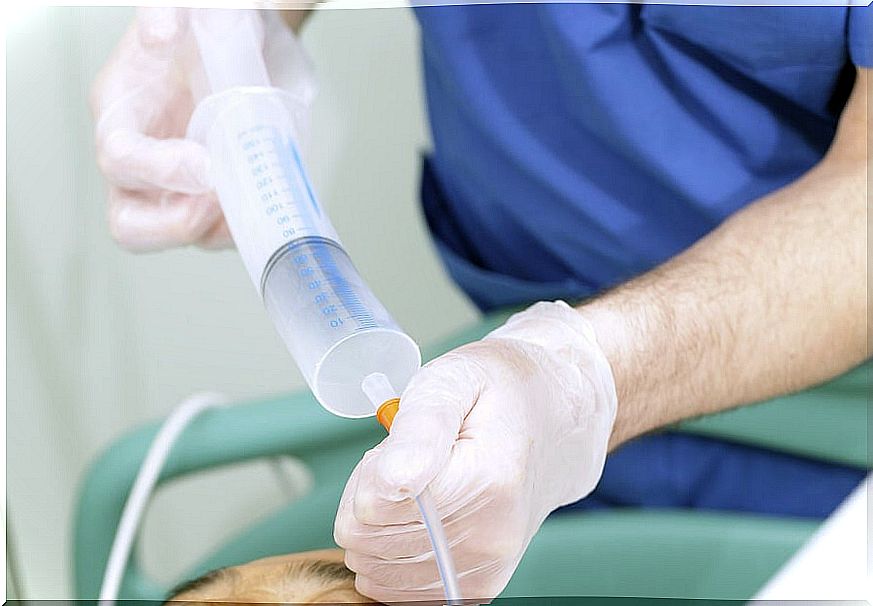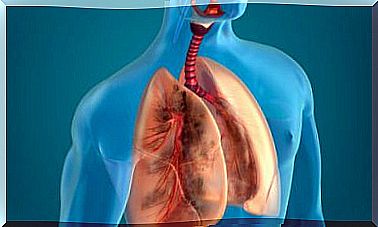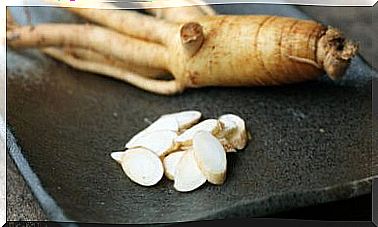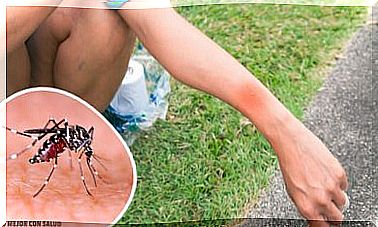Steps To Replace A Gastrostomy Tube
Gastrostomy is a surgical procedure in which a tube is placed into the stomach. This intervention is done with minimally invasive surgery, specifically with endoscopic techniques, which is why it can also be called percutaneous endoscopic gastrostomy or simply use the acronym GEP.
The introduction of a tube into the stomach allows to provide food safely to patients who cannot carry out normal digestive function.
It is very commonly used in patients with dysphagia (typical of ALS); that is, with difficulty swallowing the bolus. But, also, in people who have suffered a stroke or any other process that conditions neurological damage.
If we compare the percutaneous endoscopic gastrostomy with the nasogastric tube (the one that is placed from the nose to the stomach), we find many advantages. In the first place, the significant reduction of complications, such as infections or lesions associated with the pharynx due to the friction of the tube.
By omitting most of the digestive tract, the safety for the patient increases and also improves his psychological sphere since it is more discreet to use PEG. This is especially the case in young patients who are often concerned about the cosmetic limitation of a nasogastric tube.
Steps in the gastrostomy tube
The gastric tube provides great advantages, both medical and aesthetic, for the patient compared to the nasogastric alternative. Let’s see how it is placed below.
How is it placed?

As we have discussed previously, it is a fairly simple process. We will tell you the step by step for the placement of the gastric tube according to the data provided by the American Society of Gastrointestinal Endoscopy .
First, an IV solution is administered to sedate the patient in the endoscopy room. The most appropriate region of the abdomen is located based on the results of the endoscopy, defined by the US National Library of Medicine as a way of looking inside the body. Subsequently, it is carefully disinfected.
This area is then locally anesthetized and an incision is made in the abdominal wall. It is a small cut, more or less than 1 cm, so the recovery is fast and with few risks.
Then, a trocar is inserted into the stomach with the endoscope wire as a guide. The trocar is a kind of hollow needle capable of penetrating the stomach and reaching the interior of the organ.
Finally, the endoscope is withdrawn by dragging the wire into the patient’s mouth and the probe that will come out through the abdominal incision is placed. For added safety, manufacturers include a balloon that inflates to prevent the tube from moving. Thus, it remains subject and can be covered comfortably.
When should the gastrostomy tube need to be replaced?
The gastrostomy tube is a fairly safe procedure. However, when dealing with patients who require enteral nutrition for a long time, there may be complications that make it necessary to withdraw it.
By far the most common complication is infection, although bleeding can also occur, as noted by the MedlinePlus Medical Encyclopedia .
If we talk about an infection, it can originate in the gastrostomy hole in the abdominal wall or through the tube of the tube itself. In any case, it is mandatory to withdraw it and start an antibiotic regimen to eradicate the infection before septic shock occurs .
How is a gastrostomy tube replaced?

First, you have to sterilize and disinfect the field on which you are going to work and the nutrition is disconnected so that the probe is clean.
The tube to be placed is then checked for proper function. To do this, sterile water is introduced into the valve to inflate the balloon. If it swells properly and there are no leaks, we can use it.
The area around the opening of the patient’s stomach tube is carefully cleaned and the balloon that was preventing the gastrostomy from coming out is deflated. Now that the tube is no longer working and is not attached, it can be removed by pulling firmly with one hand while pressing on the abdomen with the other.
Finally, the new tube is inserted through the same gastrostomy hole. Ideally, the tube should be at a right angle to the abdomen to make it easier to position.
Finally, the balloon is inflated so that the new tube is fixed and is gently pulled until it stops against the gastric wall. Always disinfect at the end of this process to ensure that the new probe does not become infected.
A decision of force majeure
In conclusion, the gastrostomy tube is used in cases of force majeure when the patient, for some reason, such as a stroke, cannot feed himself.
Although the insertion of the feeding tube is simple, it is still an operation and, therefore, complications can occur. Of course, it will be the doctor who evaluates the need to place it or not, in relation to the personal need of each patient.









